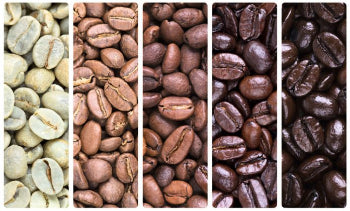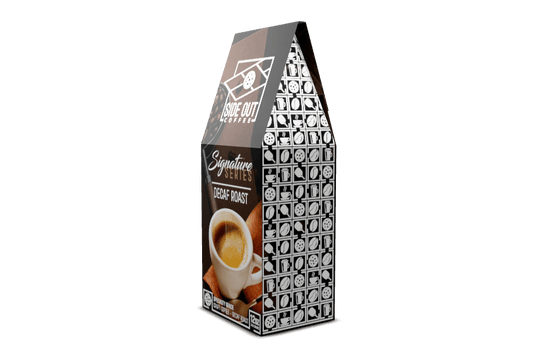SHOP DECAF ROASTS
Decaf roast coffees are coffees that have undergone a decaffeination process to remove most of the caffeine content while retaining the flavor and aroma of the coffee. They come in various roast levels, from light to dark, just like regular coffee. The primary difference lies in the process used to remove caffeine from the beans.
-
Night Owl's Delight 🦉 Sugar Cane Decaf - Ultra-Premium Medium Roast
Regular price $17.99 USDRegular priceUnit price / per$19.99 USDSale price $17.99 USDSale -
Signature Series ☕ Decaf Blend - Medium Roast - 12oz.
Regular price $17.99 USDRegular priceUnit price / per$19.99 USDSale price $17.99 USDSale

ROASTING PROCESS
1. Decaffeination Process
Decaf coffee beans go through a process to remove caffeine before or during roasting. There are several methods for decaffeinating coffee, but they all aim to reduce the caffeine content to around 97% or more, depending on the method. The decaffeination process typically happens before roasting, though some methods can also be applied during roasting.
Common Decaffeination Methods:
- Solvent-Based Methods (Direct and Indirect):
In these methods, the beans are steamed and then treated with a solvent (often methylene chloride or ethyl acetate) to extract the caffeine. The solvent binds with the caffeine and removes it from the beans. In the indirect method, the beans are soaked in hot water, which draws out the caffeine and soluble compounds, and then the water is treated with a solvent to remove the caffeine. - Swiss Water Process:
This is a chemical-free, water-based process that uses osmosis to remove caffeine from the beans. The beans are soaked in hot water, which dissolves the caffeine and other compounds. The water is then passed through activated charcoal filters that capture the caffeine molecules. This method is popular for organic decaf coffees. - Carbon Dioxide (CO2) Method:
Using pressurized CO2, this method selectively removes caffeine from the beans without affecting the other flavorful compounds. The CO2 is passed through the beans, dissolving the caffeine, and then separated from the beans. This method is considered one of the most effective in preserving the coffee's flavor. - Triglyceride Method:
In this process, coffee beans are soaked in hot water and then treated with coffee oils (triglycerides) extracted from the beans. These oils bind with caffeine and remove it. The beans are then dried to their original state.
Note: While decaf coffee contains significantly less caffeine than regular coffee, it's not entirely caffeine-free. It typically contains about 2-5 milligrams of caffeine per 8 oz cup, compared to 95 milligrams in a regular cup of coffee.




